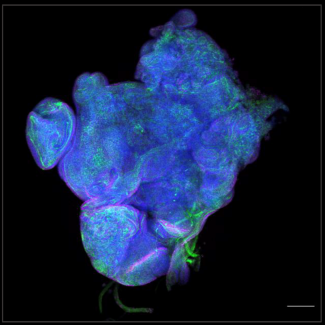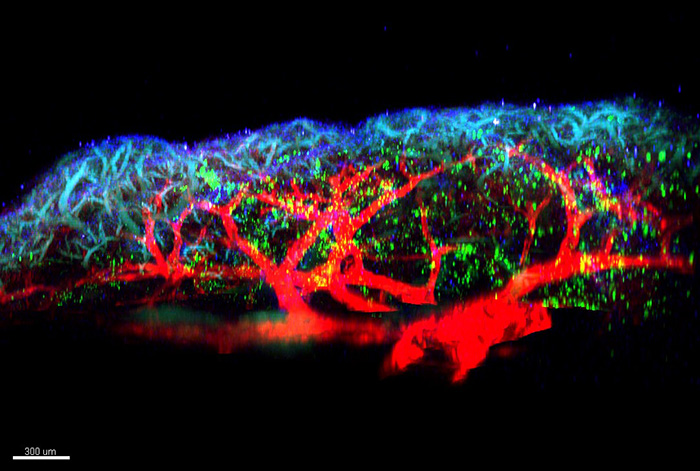
Respiratory allergies: newly discovered molecule plays a major role in triggering inflammation
|
|
One of the molecules responsible for triggering the inflammation that causes allergic respiratory diseases, such as asthma and allergic rhinitis, has just been discovered by scientists from the CNRS, Inserm and the Université Toulouse III – Paul Sabatier. This molecule, from the alarmin family, represents a therapeutic target of major interest for the treatment of allergic diseases. The study, co-directed by Corinne Cayrol and Jean-Philippe Girard, is published in the Journal of Experimental Medicine on 10 April1 .
- 1This study was supported by the ANR.
The inflammation process plays a crucial role in allergic respiratory diseases, such as asthma and allergic rhinitis. Although the pulmonary epithelium, the carpet of cells that forms the inner surface of the lungs, is recognised as a major player in the respiratory inflammation that causes these diseases, the underlying mechanisms are still poorly understood.
A research team has identified one of the molecules responsible for triggering these allergic reactions, in a study co-led by two CNRS and Inserm scientists working at l’Institut de pharmacologie et de biologie structural (CNRS/Université Toulouse III - Paul Sabatier). This molecule from the alarmin family, named TL1A, is released by lung epithelium cells a few minutes after exposure to a mould-type allergen. It cooperates with another alarmin, interleukin-33, to alert the immune system. This double alarm signal stimulates the activity of immune cells, triggering a cascade of reactions responsible for allergic inflammation.
Alarmins, therefore, constitute major therapeutic targets for the treatment of respiratory allergic diseases. In a few years' time, treatments based on antibodies blocking the TL1A alarmin could benefit patients suffering from severe asthma or other allergic diseases. In France, at least 17 million people are affected by allergic diseases2 with the most severe forms of asthma being responsible for several hundred deaths every year3 .

- 2According to the Ministère du travail, de la santé et des solidarités : https://sante.gouv.fr/sante-et-environnement/air-exterieur/pollens-et-allergies/article/effets-des-pollens-sur-la-sante; 13/04/2023
- 3According to Santé Publique France : https://www.santepubliquefrance.fr/maladies-et-traumatismes/maladies-liees-au-travail/asthme; 25/10/2023
TL1A is an epithelial alarmin that cooperates with IL-33 for initiation of allergic airway inflammation. Pauline Schmitt, Anais Duval, Mylène Camus, Emma Lefrançais, Stéphane Roga, Cécile Dedieu, Nathalie Ortega, Elisabeth Bellard, Emilie Mirey, Emmanuelle Mouton-Barbosa, Odile Burlet-Schiltz, Anne Gonzalez-de-Peredo, Corinne Cayrol and Jean-Philippe Girard. Journal of Experimental Medicine, 10 April 2024.
DOI : https://doi.org/10.1084/jem.20231236


